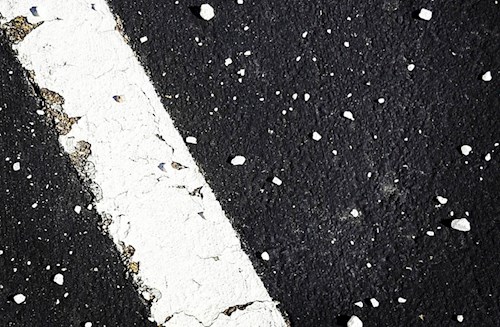Per an article in the December 29 Wisconsin State Journal titled, “Despite half century campaign, salt continues to threaten Madison lakes, drinking water,” salt that is applied to roads, driveways and sidewalks, “…dissolves in water that finds its way into lakes, streams and even the groundwater that provides the city’s drinking water.” It’s predicted that within fifteen years the water from one of Madison’s wells will begin to taste salty.
Whitewater’s Urban Forestry Commission is concerned about the negative affects of salt on the quality of our lakes, including the wildlife. They encourage you to “Salt smarter at home!”
Residents should try to manually remove snow as soon as possible to avoid slick conditions and unnecessary salt use, especially on paths and sidewalks.
A good rule of thumb is to use 12 ounces of rock salt on 10 sidewalk squares or a 20-foot driveway. How much is 12 ounces? Use an old coffee mug as a salt scoop, and you’ve got it.
You do not have to feel “the crunch” for salt to do its job. Salt lowers the freezing temperature of water so snow and ice can be more easily removed. Putting more salt on a surface does not make snow and ice melt faster or eliminate the need for plowing or shoveling.
If the air temperature is below 15 degrees, sodium chloride won’t work! Switch to sand or a different ice melter.
The Wisconsin Salt Wise Partnership is a partnership of Dane County organizations working to reduce salt pollution. Though we aren’t in Dane County, their concerns should be ours as well. Salt Wise is urging homeowners, municipalities, and private contractors to make a commitment to reduce salt use this winter. Using excess salt harms plants and animals, pollutes our water, damages buildings and corrodes vehicles, roads and bridges. Once you put salt down, it doesn’t go away. Instead, it travels into our lakes, rivers, streams and wetlands, putting our aquatic life at risk and endangering our freshwater resources. Salt also alters the composition of soil, slows plant growth and weakens the concrete, brick and stone that make up our homes, garages, bridges, and roads.
According to a recent report from Public Health Madison Dane County, more than 38,000 tons of salt were spread on Madison and Dane Co. roads during the winter of 2016-2017, and that doesn’t include what was spread on parking lots, sidewalks and driveways. That is enough to pollute over 29 billion gallons of water. There is a way to cut down on salt use and keep our roads, parking lots and driveways safe: Use only what you need — and that’s less than you might think!
Believe it or not, just a coffee mug of salt is enough to treat an entire 20-foot driveway or 10 sidewalk squares. Scatter the scatter salt so the pattern should look like the image below.

Other strategies include:
- Shovel: Clear walkways and other areas before the snow turns to ice. The more snow you remove manually, the less salt you will have to use and the more effective it will be.
- Sweep: Sweep excess salt from walkways and parking lots after a snow event, especially before a rain event to prevent salt from washing down the storm drain to our waterways.
- Switch: When pavement temps drop below 15, salt composed of sodium chloride won’t work. Switch to sand for traction or a different ice melter that works in lower temperatures.
- Hire a Certified Contractor: If you hire a contractor to do your snow and ice removal, check to see if they are already certified through the City of Madison’s Winter Salt Certification Program. If not, encourage them to become certified and to follow locally developed application rates.
- Look for proper salt use at the stores & businesses you visit. If they’re using the right amount of salt, thank them! If not, let them know you are concerned about over salting and direct them to www.wisaltwise.com for more information.
- Love the lines: the stripes on roadways before a storm are made of anti-icing brine. Using brine can reduce overall salt use by 70%! If you see brine lines, you know that your winter maintenance crew is protecting public safety while saving time, money and caring for the environment.
- Be Salt Wise all year! The salt you put in your water softener ends up in local freshwater streams. New, efficient softeners use less than one bag per month. If you’re using more – have a professional tune yours up – or, replace it with a high-efficiency model.
Do your part to help out our community and local water resources. Be Wisconsin Salt Wise! Find out more at www.wisaltwise.com.






















